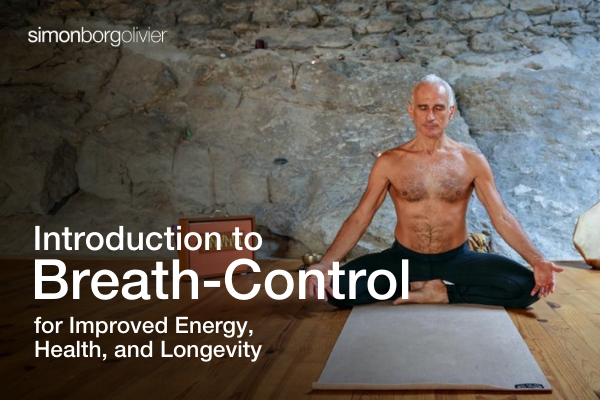Master Breath-Control Techniques with Simon Borg-Olivier
Original price was: $1,997.00.$45.00Current price is: $45.00.
Description
Welcome to my article on Simon Borg-Olivier’s Intermediate To Advanced Breath-Control Course. If you’re looking to take your breath-control practice to the next level, then you’re in the right place. In this course, Simon Borg-Olivier, a renowned expert in yoga and breath-control techniques, will guide you through a transformative journey that will deepen your understanding of the breath and its impact on your overall well-being.
In this intermediate to advanced course, you’ll learn advanced techniques and exercises that will help you harness the power of your breath to enhance your physical, mental, and emotional health. Simon’s unique approach combines his extensive knowledge of yoga, physiology, and breath-control techniques to create a comprehensive and effective program.
Whether you’re a yoga practitioner, athlete, or simply someone seeking to improve your health and well-being, this course is designed to take you to new heights in your breath-control practice. Get ready to unlock the full potential of your breath and experience the profound benefits it can bring to your life. Let’s immerse and discover the transformative power of breath-control with Simon Borg-Olivier.
Course Overview
I’m thrilled to share with you an overview of Simon Borg-Olivier’s Intermediate To Advanced Breath-Control Course. This course is a game-changer when it comes to taking your breath-control practice to the next level.
In this comprehensive program, Simon combines the ancient wisdom of yoga, the intricacies of physiology, and the power of breath-control techniques. The result is a course that not only deepens your understanding of the breath but also enhances your overall well-being.
Who is this course for?
This course is designed for yoga practitioners, athletes, and anyone who is looking to improve their health and well-being. Whether you’re a seasoned yogi or just starting your fitness journey, this course offers something for everyone.
What can you expect from the course?
Simon has meticulously curated a collection of advanced techniques and exercises that will revolutionize the way you approach breath control. In this course, you’ll learn:
Advanced yoga poses that optimize breath control
Techniques to enhance physical, mental, and emotional health
Strategies to deeply connect with your breath and harness its transformative power
Why choose Simon Borg-Olivier’s course?
Simon is a renowned expert in the field of yoga and breath control. With over 30 years of experience, he brings a wealth of knowledge and expertise to his teachings.
But what sets this course apart is Simon’s unique approach. He seamlessly blends the science of physiology with the ancient wisdom of yoga, creating a holistic and comprehensive program that is unlike any other.
Don’t miss the opportunity to unlock the full potential of your breath and experience the transformative power of breath control with Simon Borg-Olivier. Get ready to elevate your practice and improve your well-being like never before.
About Simon Borg-Olivier
Simon Borg-Olivier is a renowned expert in the field of yoga and breath control. With over 40 years of experience, Simon has dedicated his life to understanding the intricacies of the human body and how breath can be used as a powerful tool for transformation and healing.
As a co-founder of Yoga Synergy, Simon has developed a unique approach to yoga that combines the ancient wisdom of traditional practices with the scientific understanding of modern physiology. He has taught thousands of students around the world, including professional athletes, yoga practitioners, and individuals seeking to improve their overall well-being.
Simon’s Intermediate to Advanced Breath-Control Course encapsulates his vast knowledge and expertise. In this course, he shares advanced techniques and exercises that go beyond the basics of breath control. By incorporating elements of yoga, physiology, and breath control techniques, Simon offers a comprehensive program that optimizes breath control and enhances physical, mental, and emotional health.
What sets Simon apart is his ability to bridge the gap between science and spirituality. He combines evidence-based practices with ancient wisdom, presenting a holistic approach that resonates with students across the globe. Simon’s passion for breath control shines through in his teaching, making his courses engaging and transformative.
Don’t miss the opportunity to learn from Simon Borg-Olivier and unlock the full potential of your breath. Through his Intermediate to Advanced Breath-Control Course, you can tap into the transformative power of breath control and experience a profound connection with your body, mind, and spirit.
The Power of Breath-Control
When it comes to harnessing the full potential of our breath, breath-control techniques can be incredibly powerful. The benefits extend beyond just physical health, encompassing mental and emotional well-being as well. In Simon Borg-Olivier’s Intermediate To Advanced Breath-Control Course, you’ll discover the transformative power that lies within your breath.
Breath-control practices have been around for centuries, with roots in ancient yogic traditions. But, what sets Simon Borg-Olivier’s approach apart is his ability to bridge the gap between ancient wisdom and modern scientific understanding. With over 40 years of experience and as a co-founder of Yoga Synergy, Simon has honed his techniques and crafted a course that brings together the best of both worlds.
In the course, you’ll be introduced to advanced breath-control exercises and techniques that optimize your breathing patterns. These exercises go beyond simple breath awareness and investigate into the intricate mechanics of the respiratory system. By understanding and harnessing the power of your breath, you can enhance your overall physical, mental, and emotional health.
One of the key aspects of Simon’s approach is his emphasis on the connection between breath and movement. By synchronizing breath with movement, you can tap into the inherent intelligence of your body and experience a deeper level of awareness. This integrated approach is what sets Simon’s course apart and makes it truly transformative.
Breath-control techniques have been scientifically shown to have numerous health benefits. They can help reduce stress, improve sleep quality, enhance focus and concentration, boost immune function, and even regulate emotions. Research has also shown that deep breathing activates the parasympathetic nervous system, promoting relaxation and reducing the body’s stress response.
Whether you’re an experienced practitioner or new to breath control, Simon Borg-Olivier’s Intermediate To Advanced Breath-Control Course offers a wealth of knowledge and techniques to deepen your practice. With his unique blend of ancient wisdom and modern science, Simon will guide you on a journey to fully unlock the power of your breath.
So why wait? Don’t miss this opportunity to take your breath-control practice to the next level and experience the profound benefits that come with it. Let Simon Borg-Olivier be your guide as you tap into the true power of your breath.
Prerequisites for the Course
Before enrolling in Simon Borg-Olivier’s Intermediate To Advanced Breath-Control Course, it is important to be aware of the prerequisites for the course. These prerequisites will ensure that you have a solid foundation and are ready to dive deep into breath control techniques. Here are a few key prerequisites to consider:
Basic understanding of breath control
To fully benefit from the intermediate to advanced level of the course, it is recommended to have a basic understanding of breath control techniques. This includes knowledge of foundational practices such as deep abdominal breathing and diaphragmatic breathing. If you are new to breath control, it is advisable to start with a beginner-level course or practice before taking this intermediate to advanced course.
Physical fitness
Simon’s course incorporates breath control exercises that involve movement and physical postures. Hence, it is important to have a certain level of physical fitness to ensure that you can comfortably participate in these exercises. This doesn’t mean you need to be an athlete or have a specific body type, but being in good general health and having some level of physical activity before the course is beneficial.
Openness to exploration
The breath has a profound impact on our physical, mental, and emotional well-being. Simon’s course aims to explore the potential of breath control techniques in all of these areas. It requires an open mind and willingness to explore new concepts and ideas. Being receptive to different approaches and perspectives will greatly enhance your experience in the course.
Willingness to commit
To truly benefit from Simon’s Intermediate To Advanced Breath-Control Course, it’s important to approach it with dedication and commitment. Breath control is a practice that requires consistency and regularity. It’s not a quick fix or a one-time effort. By committing to the course and showing up for yourself, you are laying the foundation for long-term benefits and growth.
By meeting these prerequisites, you’ll be ready to begin on an enriching journey through breath control with Simon Borg-Olivier as your guide. Don’t miss the opportunity to deepen your understanding, enhance your practice, and unlock the true power of your breath.
Intermediate Techniques and Exercises In the Intermediate to Advanced Breath-Control Course with Simon Borg-Olivier, you’ll dive deeper into the world of breath control techniques. This course is designed for those who already have a basic understanding of breath control and are ready to take their practice to the next level.
Kapalabhati Breath: This powerful breath technique involves quick, forceful exhalations followed by passive inhalations. It helps to cleanse the respiratory system, increase vitality, and clear the mind.
Nadi Shodhana (Alternate Nostril Breathing): This practice involves breathing alternating through the left and right nostrils. It helps balance the energy in the body, improve focus, and promote relaxation.
Three-Part Breath (Dirga Pranayama): By consciously engaging the belly, ribcage, and upper chest, you will learn how to take full, deep breaths. This technique increases lung capacity, improves oxygenation, and calms the nervous system.
Sitali (Cooling Breath): This breath involves rolling the tongue and inhaling through the mouth, bringing in cool air and releasing heat from the body. It helps reduce stress, cool the body, and promote clarity.
Ujjayi Breath: Known as the “victorious breath,” this technique involves constricting the back of the throat while breathing in and out through the nose. It helps build heat in the body, enhance focus, and regulate energy.
Throughout the course, you’ll have the opportunity to practice these techniques under the guidance of Simon Borg-Olivier. He will provide valuable insights, adjustments, and variations to help you refine your practice and deepen your understanding of breath control.
Remember, the Intermediate to Advanced Breath-Control Course is designed for individuals who already have a basic understanding of breath control techniques. So, if you’re ready to elevate your practice and unlock the true power of your breath, this course is for you. Join Simon Borg-Olivier on this transformative journey.
Please note that enrollment in this course requires physical fitness, an openness to exploration, and a commitment to regular practice.
And that’s just the beginning. Let’s now explore the benefits of deepening your breath control practice with Simon Borg-Olivier.
Advanced Techniques and Exercises

In Simon Borg-Olivier’s Intermediate To Advanced Breath-Control Course, participants have the opportunity to investigate into a wide range of advanced techniques and exercises that take their breath control practice to new heights. Here, I’ll give you a glimpse of some of the powerful techniques that can be explored in the course:
Kapalabhati Breath: Also known as the “skull shining breath,” Kapalabhati is a powerful breathing technique that invigorates the mind and body. By rapidly exhaling and allowing the inhalation to happen naturally, this exercise increases lung capacity and energizes the system.
Nadi Shodhana: This purifying breath exercise focuses on alternate nostril breathing. It helps balance the left and right sides of the brain, promoting mental clarity and reducing stress. Nadi Shodhana is known for its calming and centering effects.
Three-Part Breath: As the name suggests, this technique involves consciously breathing into three parts of the torso: the lower abdomen, the diaphragm, and the chest. It improves breath awareness and fosters deep relaxation.
Sitali Breath: Sitali breath is a cooling breath technique that involves inhaling through the mouth and exhaling through the nose. It provides a sense of calmness and reduces body heat. By practicing this technique, participants can regulate their body temperature and find relief from anxiety.
Ujjayi Breath: Ujjayi, or “victorious breath,” is a powerful technique where one breathes in and out through the nose while slightly constraining the throat. This technique generates a gentle, ocean-like sound, promoting a sense of focus, concentration, and internal heat.
Throughout the course, Simon Borg-Olivier provides guidance, insights, adjustments, and variations to help participants refine their practice and deepen their understanding of these advanced techniques. By incorporating these exercises into their routine, participants can unlock the true power of their breath.
Integrating Breath-Control into Yoga Practice
When it comes to incorporating breath-control techniques into your yoga practice, there are several key considerations to keep in mind. As someone who has experienced the transformative power of breath control in my own practice, I can confidently say that it is a game-changer for deepening your yoga journey.
Enhancing Mind-Body Connection: By integrating breath-control techniques into your yoga practice, you can take your mind-body connection to a whole new level. With focused breathing patterns, you can synchronize your movements with your breath, enhancing your awareness and presence on the mat.
Elevating Physical Performance: Controlled breathing can have a profound impact on your physical performance in yoga. By utilizing advanced breath-control techniques, you can optimize your energy levels, improve stamina, and enhance your overall strength and flexibility.
Deepening Relaxation and Meditation: Breath control is an invaluable tool for promoting deep relaxation and meditation. By incorporating techniques such as Ujjayi Breath and Nadi Shodhana, you can calm the mind, release stress, and achieve a state of deep relaxation that complements your yoga practice.
Boosting Mental Clarity and Focus: Plus to its physical benefits, breath control has a significant impact on mental clarity and focus. By harnessing techniques like Kapalabhati Breath and Three-Part Breath, you can clear your mind, improve concentration, and unlock a sense of mental clarity that carries over into all aspects of your life.
Remember, integrating breath-control techniques into your yoga practice is a journey that requires patience, practice, and an open mind. As you explore these advanced techniques in Simon Borg-Olivier’s Intermediate To Advanced Breath-Control Course, be willing to experiment, make adjustments, and allow yourself the space to experience the full power of your breath.
In the next section, we’ll investigate deeper into the specific benefits of each breath-control technique covered in the course. So, let’s take a closer look at the transformative power of Kapalabhati Breath, Nadi Shodhana, Three-Part Breath, Sitali, and Ujjayi Breath.
Enhancing Physical Health through Breath-Control One of the key benefits of integrating breath-control techniques into a yoga practice is the enhancement of physical health. Through focused breathing exercises, practitioners can experience a wide range of physical improvements.
Increased Lung Capacity: Deep breathing exercises, such as diaphragmatic breathing, help expand lung capacity, allowing for a higher intake of oxygen. This can lead to improved cardiovascular health and increased stamina during physical activities.
Improved Posture: Conscious breathing techniques can help promote better posture. By engaging the muscles of the core and back during breath control, practitioners can strengthen these areas, leading to a more aligned and healthy spine.
Enhanced Relaxation and Stress Reduction: Proper breathing techniques activate the body’s relaxation response and help combat the effects of stress. Controlled breaths can reduce muscle tension, lower blood pressure, and promote a sense of calm and relaxation.
Increased Energy Levels: By supplying the body with more oxygen, breath-control techniques can boost energy levels. This can be particularly beneficial for individuals dealing with fatigue or low energy.
Enhanced Athletic Performance: Integrating breath control into physical activities, such as yoga asanas or sports, can enhance performance. By synchronizing breath with movement, practitioners can improve coordination, balance, and overall physical performance.
Breath-control techniques have the potential to greatly enhance physical health by improving lung capacity, posture, relaxation, energy levels, and athletic performance. Incorporating these techniques into a regular yoga practice can lead to noticeable improvements in physical well-being. Keep reading to learn more about the mental and emotional benefits of breath control in the next section.
Improving Mental and Emotional Well-being
The integration of breath-control techniques in a yoga practice not only enhances physical health but also contributes to the improvement of mental and emotional well-being. As I investigate deeper into the practice of breath control, I have experienced firsthand the transformative effects it has on my mind and emotions.
1. Stress Reduction: One of the immediate benefits I have noticed is the significant reduction in stress levels. By consciously regulating my breath, I activate the body’s relaxation response, which helps to calm the mind and release tension. The rhythmic and mindful breathing allows me to let go of stress and promotes a sense of calm and tranquility.
2. Mental Clarity and Focus: Breath control acts as a powerful tool to sharpen my mental faculties. It enhances my ability to concentrate, think clearly, and make decisions with clarity. Through focused breathing, I am able to declutter my mind and channel my thoughts towards a specific task or goal, resulting in improved productivity and efficiency.
3. Emotional Balance: The connection between breath and emotions is profound. By intentionally regulating my breath, I can influence and regulate my emotional state. Slow and deep breaths can help me find a sense of balance and calm during moments of heightened emotions. Conversely, energizing breaths can uplift my mood and provide a boost of positivity.
4. Mind-Body Connection: Breath control serves as a bridge between the mind and body, strengthening their connection. By synchronizing my breath with movement during yoga asanas, I enhance body awareness and deepen my practice. This increased awareness helps me to connect more deeply with my body, promoting a sense of harmony and a greater understanding of myself.
5. Mental Resilience: The practice of breath control cultivates mental resilience, allowing me to navigate life’s challenges with a greater sense of equanimity. By training my mind to stay calm and focused during moments of stress or adversity, I am better equipped to handle challenging situations and bounce back more quickly.
Incorporating breath-control techniques into your yoga practice can have a profound impact on your mental and emotional well-being. I invite you to explore the transformative power of breath control and experience the positive effects it can bring to your life.
FAQs
FAQs
 As we investigate deeper into the topic of breath control and its integration into a yoga practice, it’s only natural for questions to arise. Let’s address some common FAQs to provide you with a clearer understanding:
As we investigate deeper into the topic of breath control and its integration into a yoga practice, it’s only natural for questions to arise. Let’s address some common FAQs to provide you with a clearer understanding:
1. What is breath control in yoga?
Breath control, also known as pranayama, is the conscious regulation of breath in yoga. It involves various techniques and patterns of breathing to influence the body and mind. Through mindful control of the breath, practitioners are able to tap into its transformative power and enhance their overall yoga experience.
2. What are the benefits of incorporating breath control into yoga?
Integrating breath control techniques into a yoga practice brings forth numerous benefits. Some of these include:
Deepening the mind-body connection: By synchronizing breath with movement, practitioners cultivate a heightened awareness of their bodies.
Elevating physical performance: Controlled breathing allows for increased oxygen intake, enhancing stamina, strength, and flexibility during asanas.
Deepening relaxation and meditation: Focused breathing techniques induce a state of calm and relaxation, aiding in stress reduction and deeper meditative states.
Boosting mental clarity and focus: By channeling attention on the breath, practitioners develop sharper mental focus and improved clarity.
3. Can beginners practice breath control techniques?
While breath control techniques have a tendency to be more advanced, beginners can start incorporating simple breathing exercises into their yoga practice. It’s vital to approach these techniques gradually, with the guidance of a qualified yoga instructor, to ensure proper understanding and execution.
4. How often should breath control techniques be practiced?
The frequency of practicing breath control techniques depends on individual preferences and goals. Some practitioners find benefit in practicing pranayama daily, while others incorporate it into their routine a few times a week. Consistency and regularity are key, allowing for the gradual assimilation of these techniques into your yoga journey.
5. Are there any risks or precautions associated with breath control in yoga?
While breath control techniques are generally safe, it’s important to practice them mindfully and under the guidance of a qualified instructor. Certain techniques, such as holding the breath for extended periods, should be approached with caution and gradually built up over time. If you have any respiratory or cardiovascular conditions, it’s advisable to consult with your healthcare professional before engaging in breath control practices.
Conclusion
Integrating breath-control techniques into your yoga practice can have profound effects on your mind, body, and overall well-being. By incorporating these advanced techniques, you can deepen your mind-body connection, enhance physical performance, and experience deeper relaxation and meditation. Also, breath control can improve mental clarity and focus, allowing you to fully immerse yourself in the present moment.
Incorporating breath control into your yoga practice requires patience, practice, and an open mind. It is important to approach these techniques with a sense of curiosity and exploration, allowing yourself to fully embrace the transformative power of breath control.
Whether you are a beginner or an experienced practitioner, breath control can be practiced at any level. It is a versatile tool that can be adapted to suit your individual needs and goals. But, it is important to consult with a qualified instructor to ensure proper technique and to address any potential risks or precautions associated with breath control in yoga.
Incorporating breath-control techniques into your yoga practice can truly elevate your journey and unlock new levels of physical and mental well-being. So take a deep breath, embrace the power of breath control, and let it guide you on your yoga journey.
Frequently Asked Questions
What is breath control in yoga?
Breath control in yoga refers to the conscious regulation of the breath to improve physical, mental, and spiritual well-being. It involves specific techniques like diaphragmatic breathing, alternate nostril breathing, and ujjayi breathing that help deepen the breath and bring awareness to it during the yoga practice.
What are the benefits of incorporating breath control into yoga?
Incorporating breath control techniques into yoga has numerous benefits. It enhances the mind-body connection, improves physical performance, promotes relaxation and meditation, boosts mental clarity and focus, and reduces stress and anxiety.
Can beginners practice breath control techniques in yoga?
Yes, beginners can practice breath control techniques in yoga. Start with simple techniques like deep breathing and gradually progress to more advanced techniques as you gain experience and confidence.
How often should breath control techniques be practiced?
The frequency of practicing breath control techniques depends on individual preferences and goals. However, integrating them into your daily yoga practice, even if it’s just for a few minutes, can yield significant benefits. Regular and consistent practice will help you cultivate a deeper understanding and mastery of breath control.
Are there any risks or precautions associated with breath control in yoga?
While breath control techniques are generally safe, it is important to practice them under the guidance of a qualified yoga instructor. Individuals with certain medical conditions like respiratory disorders or cardiovascular issues should consult their healthcare provider before attempting breath control techniques. Start slowly, listen to your body, and modify the techniques as needed to ensure safety and avoid any discomfort or strain.




